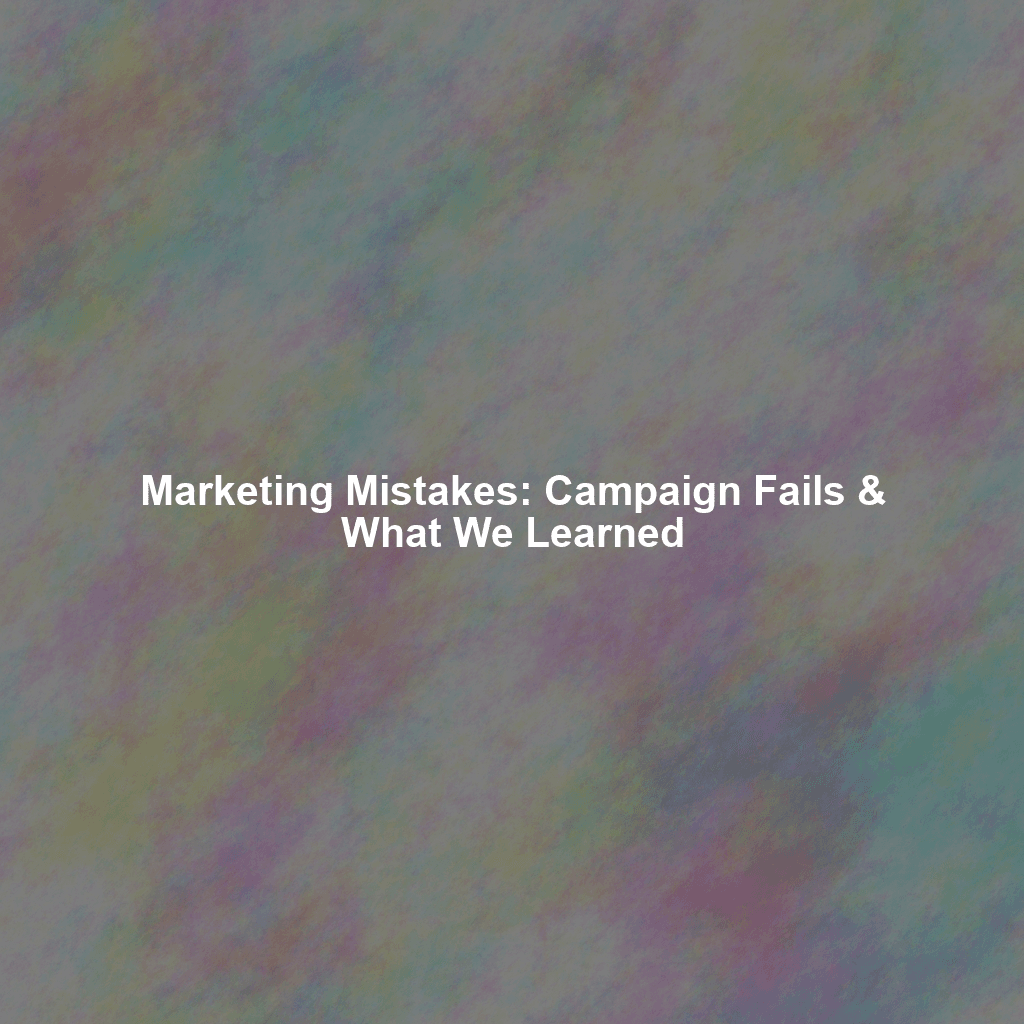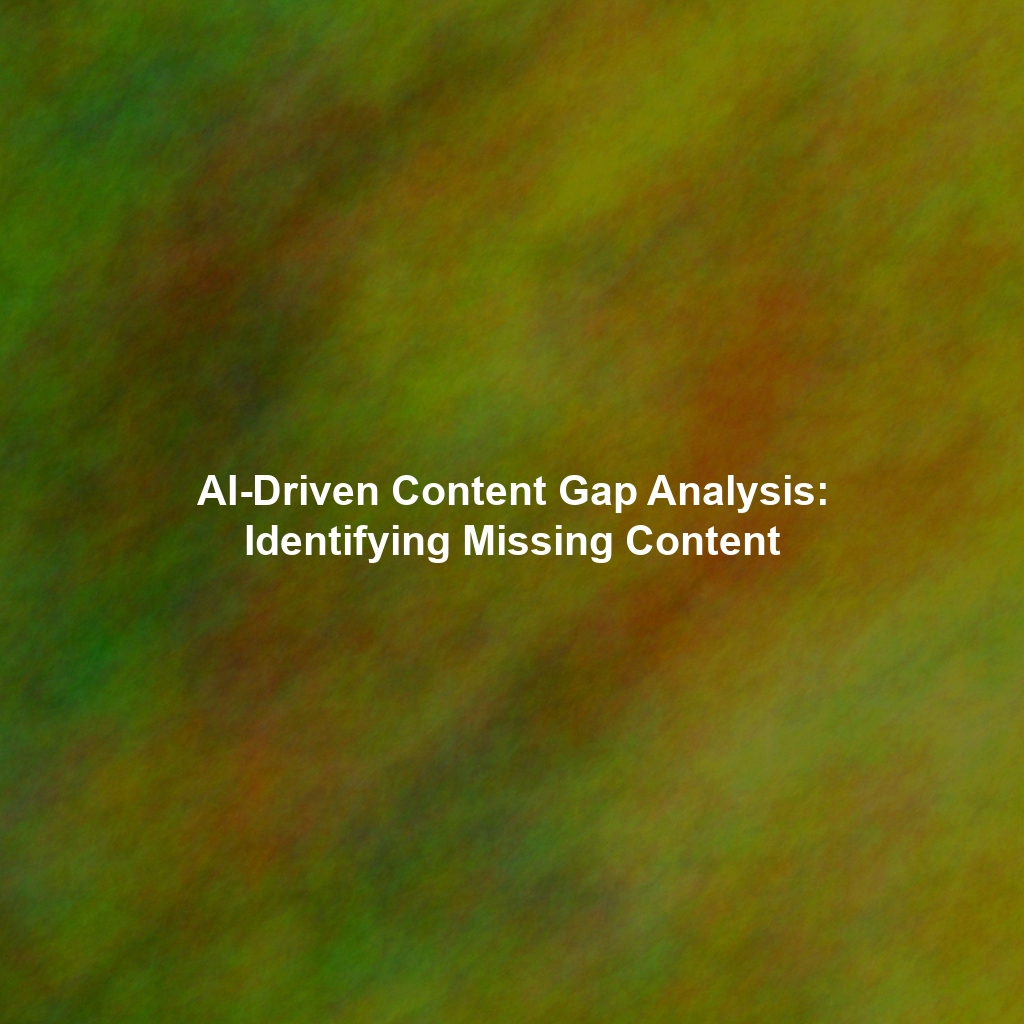The world of marketing is paved with good intentions…and the occasional spectacular failure. We’ve all been there: a campaign that looked brilliant on paper but bombed in reality. I’m here to share some of my own experiences – the good, the bad, and the downright embarrassing – in the hopes that you can learn from my mistakes.
The Perils of Assumption: When “Everyone” Didn’t Get the Joke
Early in my career, I was tasked with launching a social media campaign for a regional pizza chain. The concept? Humorous memes playing on local rivalries. We thought it was a surefire hit, tapping into regional pride and generating buzz. We envisioned viral sharing, media coverage, and a boost in sales.
The Setup: A Risky Meme Strategy
We developed a series of memes that playfully poked fun at neighboring towns, highlighting perceived differences in their pizza preferences. One meme, for example, suggested that people in a specific town only ordered pizza with pineapple (a controversial topic, I know!). Another joked about the supposed lack of culinary sophistication in another area. We thought we were being clever and edgy.
The Execution: Tone-Deaf and Disastrous
We launched the campaign across Facebook, Instagram, and Twitter. Almost immediately, the backlash began. Instead of laughter and sharing, we were met with angry comments, accusations of being insensitive, and even threats of boycotts. The memes were perceived as mean-spirited and offensive, not humorous.
The Aftermath: A Public Apology and Damage Control
The campaign was pulled within 24 hours. We issued a public apology, acknowledging our mistake and vowing to do better. We lost a significant amount of social media followers and faced considerable negative press. Our client was furious, and understandably so.
The Lesson: Know Your Audience and Tread Carefully
The biggest lesson I learned was the importance of truly understanding your audience and the potential impact of your messaging. We made the mistake of assuming that everyone would find our humor amusing. We failed to consider the sensitivities of the communities we were targeting. As the Harvard Business Review points out, even well-intentioned marketing can backfire spectacularly if it misses the mark culturally or emotionally. HBR is a great resource for understanding the complexities of marketing to diverse audiences. Before launching any campaign, especially one that relies on humor or potentially controversial themes, it’s crucial to conduct thorough research and test your messaging with a representative sample of your target audience. Consider using focus groups or A/B testing to gauge reactions and identify potential pitfalls before they become public relations nightmares.
The Email Marketing Meltdown: Segmentation Gone Wrong
Another memorable marketing fail involved an email marketing campaign for an online retailer selling outdoor gear. The goal was to increase sales during the off-season by offering targeted promotions to specific customer segments.
The Setup: Personalized Promotions Based on Purchase History
We had meticulously segmented our email list based on previous purchase history: campers, hikers, climbers, and so on. The idea was to send personalized emails featuring products and promotions relevant to each segment. For example, campers would receive offers on tents and sleeping bags, while hikers would see deals on backpacks and hiking boots. We felt confident that by creating tailored emails, we could increase engagement and conversions. We even used a sophisticated email marketing platform, like Mailchimp, to personalize the subject lines and body copy.
The Execution: A Segmentation Snafu
However, a crucial error occurred during the segmentation process. Due to a technical glitch and a lack of proper quality control, the segments were inadvertently mixed up. Campers received emails about climbing gear, hikers were offered discounts on kayaking equipment, and so on.
The Aftermath: Customer Confusion and Lost Sales
The results were disastrous. Customers were confused and frustrated by the irrelevant offers. Many unsubscribed from the email list, and sales plummeted. We received a flood of complaints and had to spend hours addressing individual inquiries and apologizing for the error.
The Lesson: The Importance of Quality Control and Data Integrity
This experience highlighted the critical importance of quality control and data integrity in marketing. Even the most well-designed campaign can fail if the underlying data is inaccurate or flawed. Before launching any email campaign, double-check your segmentation, test your emails thoroughly, and ensure that your data is accurate and up-to-date. According to the DMA (Direct Marketing Association), data hygiene is paramount for successful email marketing campaigns. DMA offers helpful resources and best practices for maintaining data quality. Consider implementing automated data validation processes and conducting regular audits to identify and correct errors.
Furthermore, this experience emphasized the value of manual spot-checking. While automation is powerful, it shouldn’t replace human oversight, especially when dealing with sensitive customer data. Having a second pair of eyes review the segmentation logic and email content before launch could have prevented this costly mistake.
The Influencer Implosion: When Authenticity Took a Dive
In another instance, I oversaw an influencer marketing campaign for a new line of sustainable clothing. The goal was to partner with influential figures in the eco-conscious community to raise awareness and drive sales.
The Setup: Aligning with Eco-Conscious Influencers
We carefully selected a group of influencers who aligned with our brand values and had a genuine interest in sustainability. We provided them with samples of our clothing and gave them creative freedom to showcase the products in their own unique way. We believed that their authenticity and genuine passion for the environment would resonate with their followers.
The Execution: A Lack of Transparency and Misalignment
However, one of the influencers we partnered with made a critical error: they failed to disclose that their post was sponsored. They presented the clothing as if they had purchased it themselves, without mentioning the partnership. This lack of transparency violated advertising regulations and damaged the influencer’s credibility.
The Aftermath: A Public Shaming and Tarnished Reputation
Followers quickly noticed the lack of disclosure and called out the influencer on social media. The backlash was swift and severe. The influencer lost followers, and our brand was associated with deceptive marketing practices. We had to issue a statement clarifying our commitment to transparency and accountability.
The Lesson: Prioritize Transparency and Due Diligence
This experience underscored the importance of transparency and due diligence in influencer marketing. It’s crucial to ensure that influencers clearly disclose their partnerships and adhere to advertising regulations, such as those outlined by the Federal Trade Commission (FTC). FTC’s Advertising and Marketing guidelines are critical to follow. We learned to implement stricter guidelines for influencer partnerships, including mandatory disclosure clauses in contracts and regular monitoring of their content to ensure compliance.
Beyond the legal requirements, this incident highlighted the importance of choosing influencers who genuinely align with your brand values. Authenticity is key to building trust with consumers. Conduct thorough research to ensure that potential partners have a proven track record of ethical behavior and transparency. Don’t just look at follower counts; focus on engagement rates and the quality of their content.
The Website Redesign Debacle: Forgetting the User Experience
A few years ago, I was involved in a website redesign project for a technology company. The goal was to modernize the site’s appearance and improve its functionality.
The Setup: A Focus on Aesthetics and New Features
The design team focused heavily on creating a visually appealing website with cutting-edge features. They incorporated parallax scrolling, animated graphics, and a complex navigation system. The emphasis was on innovation and aesthetics, rather than user experience. We got so caught up in the bells and whistles that we lost sight of the core purpose of the website: to provide information and generate leads.
The Execution: A Confusing and Cluttered Website
The redesigned website was visually stunning, but it was also confusing and difficult to navigate. Key information was buried deep within the site, and users struggled to find what they were looking for. The complex navigation system and heavy use of animations slowed down the site’s loading speed, further frustrating visitors.
The Aftermath: High Bounce Rates and Low Conversions
The results were disappointing. Bounce rates increased significantly, and conversion rates plummeted. Users were abandoning the site in droves, unable to find the information they needed or complete their desired actions.
The Lesson: User Experience Above All Else
This experience reinforced the paramount importance of user experience (UX) in website design. Aesthetics are important, but they should never come at the expense of usability. Before embarking on a website redesign, conduct thorough user research to understand your target audience’s needs and preferences. According to the Nielsen Norman Group, usability testing is essential for identifying and addressing UX issues. Nielsen Norman Group offers expert advice and resources on UX design.
Focus on creating a clear and intuitive navigation system, optimizing site loading speed, and ensuring that key information is easily accessible. Consider implementing A/B testing to compare different design options and identify the most effective solutions. Remember, the primary goal of your website should be to provide a positive and seamless experience for your users.
Key Takeaways: Avoiding Marketing Mishaps
These are just a few examples of the marketing failures I’ve experienced throughout my career. While these experiences were initially frustrating and even embarrassing, they ultimately proved to be invaluable learning opportunities. Here are some key takeaways that I’ve learned along the way:
- Know your audience: Conduct thorough research and understand their needs, preferences, and sensitivities.
- Prioritize quality control: Double-check your data, test your campaigns thoroughly, and implement rigorous quality control processes.
- Embrace transparency: Be honest and upfront with your audience, especially in influencer marketing.
- Focus on user experience: Prioritize usability and ensure that your website is easy to navigate and provides a positive user experience.
- Be adaptable: Marketing is a constantly evolving field. Be prepared to adapt your strategies and tactics as needed.
- Learn from your mistakes: Don’t be afraid to admit when you’ve made a mistake. Analyze what went wrong and use that knowledge to improve your future campaigns.
The world of marketing is full of potential pitfalls, but by learning from our mistakes and adopting a proactive approach, we can minimize the risk of failure and create successful campaigns that resonate with our target audiences. And sometimes, admitting your faults is the most authentic way to connect with your audience. If you are looking for assistance with marketing campaigns, consider reaching out to marketing professionals with years of experience, and a proven track record of success.
This article was optimized and published by Content Hurricane.
 Skip to content
Skip to content

